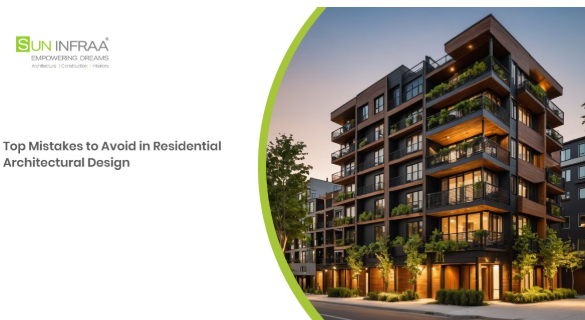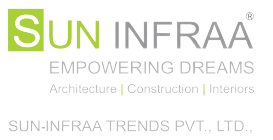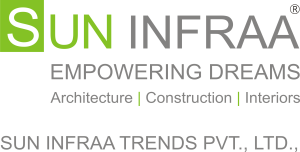Top Mistakes to Avoid in Residential Architectural Design
Home construction or renovation is a very exciting process and unless properly planned, it might turn out to be stressful and expensive. Avoidable errors that can impact on comfort, safety and future value are made by many home owners.
The following are some of the most common pitfalls and ways of avoiding them
Skipping Site Analysis
Disregarding the terrain, drainage and climatic conditions of a site can be a significant problem. In this case, slope should not be left out in construction, which can result in waterlogging. Understand the sun paths and wind direction at all times: arrange the living areas to take advantage of the natural light and ventilation, without overheating in the afternoon.
Wrong Orientation
The direction of a home influences the comfort and consumption of energy. In India, living rooms are oriented north or east to keep out hot afternoon sun and in cooler climates, south facing rooms absorb passive heat. Such wrong orientation may translate to intolerable summers or expensive winters.
Poor Layout and Flow
The scattered floor plan makes it less comfortable. Do not make rooms incompatible to each other. Bedrooms are to be silent and intimate whereas kitchens are to be linked to the dining areas. Even spacious houses can become claustrophobic with the help of narrow corridors or isolated rooms.
Insufficient Storage
Storage is something many homeowners forget and their homes end up being cluttered. Design wardrobes, pantries, and other concealed areas such as under-stair cupboards. Inbuilt storage makes the houses neat and adds sophistication.
Not Future-Proofing
Design for long-term needs. Families become larger, lifestyles evolve and aging in place is important. Add versatile rooms (office, guest room or playroom) and even one bedroom and bathroom on the ground floor.
Failure to embrace Energy Efficiency.
Single-pane windows, poor insulation or weak ventilation increases bills. Starting with the initial decisions, select material-energy efficient options, such as double-glazed windows, adequate insulation and shading options. This saves money and makes the interiors comfortable even during extreme climates.
Underestimating Budget
Projects can go astray due to hidden costs. Include a contingency of 10-15% of unforeseen costs. Obtain detailed quotes in advance and incur soft costs (permits, design fees, inspections).
Making the Design too complex.
The fancy features can appear attractive but introduce an extra cost and maintenance difficulties. Minimalism and uniformity in design are perennial, less difficult to implement, and less expensive.
Reckless Contractors and Inspections.
Your project is or is not made by your team. Contract with good architects and contractors, reference checks and sign contracts. Frequent site visits will ensure that defects and code infractions are eliminated before it becomes costly to rectify in the future.
Bottom Line: Planning, clever orientation, storage options, and energy conservation are the keys to making your home not only beautiful but also safe, and practical and up to date. These are some of the pitfalls you can avoid to regret and unwarranted expenses.



